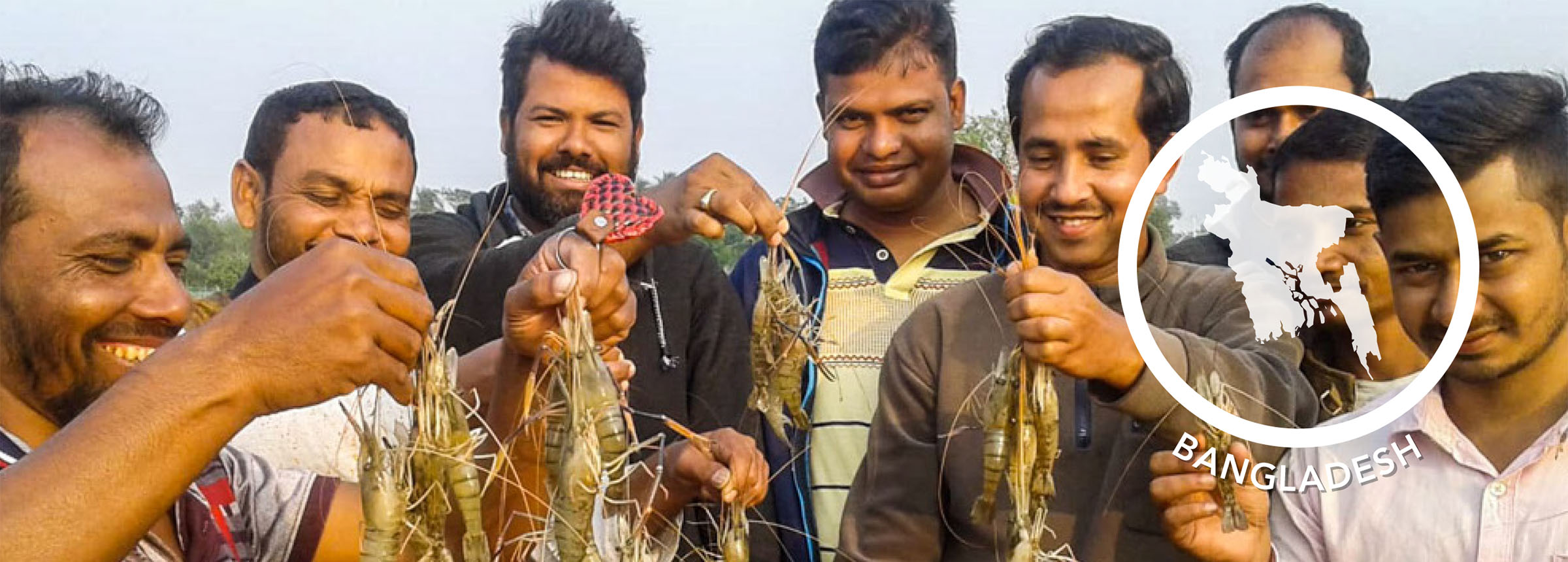
How New Shrimp Farming Methods are Improving Lives in Bangladesh
 PROJECT NAME: Safe Aqua Farming For Economic and Trade Improvement (SAFETI)
PROJECT NAME: Safe Aqua Farming For Economic and Trade Improvement (SAFETI)
SYNOPSIS: SAFETI trains and supports shrimp and prawn farmers in Bangladesh, and builds the capacity of domestic trade associations and government agencies they work with, to boost livelihoods, increase productivity in the shrimp and prawn industries, and improve food quality and safety in Bangladesh.
YEARS ACTIVE: 2016-2021
FUNDER: USDA
In the village of Jogindranagar, Shyamnagar, in the Satkhira district of Bangladesh,
young men often spend six months a year away from home and family, toiling in the brick fields. It’s difficult work, dusty and dangerous, but the men keep returning because that income can make all the difference during the lean winter months.
There are fewer Jogindranagar men heading to the brick fields since Winrock’s USDA-funded Safe Aqua Farming for Economic and Trade Improvement (SAFETI) project began. SAFETI provides shrimp and prawn farmers in the region with access to finance and training, helping them boost their incomes so they don’t have to leave their families to make ends meet.
To bring this about, SAFETI, like many projects, depends on early adopters, people who embrace new methods before others do. Shrimp farmer Md. Hizbullah is one of those people.
When SAFETI conducted trainings in the area, Hizbullah became a demo farmer. He increased the water depth in his pond by removing the black layer of soil on the bottom, he filtered and treated the water, installed blue net fencing for biosecurity, and stocked the pond with specific pathogen-free shrimp post larvae (SPF PL).
At first, fellow shrimp farmers doubted their friend’s new methods, but after he earned a profit of more than $550 off his second harvest — his best haul in nine years of shrimp farming — they wanted to follow his lead.
To spread out the investment cost, they came together in a group they called the Semi-Intensive Shrimp Farmers’ Association with Hizbullah as advisor and mentor. They estimated the total cost of production, divided it into equal shares and put forward the initial capital.
In early 2019, this group began to follow SAFETI’s methods in their four ponds. After just one season they were able to raise 788 kilograms of shrimp and sell them for $6,378, a significant profit. They distributed 50 percent of this equally among members and deposited the rest in a group account to use in the next farm cycle.
As word of their bountiful harvest began to spread, they acquired scores of new members and six new ponds. There are now 75 members in the Semi-Intensive Shrimp Farmers’ Association. Hizbullah continues to offer guidance — and his business continues to thrive. He no longer has to work a construction job and has built a brick house for his family.
As for his fellow farmers, he says, “They used to work in the field for six months in a year and it was difficult for them to stay away from family a long time. But now, they are able to work staying at home. They are financially more benefited in shrimp farming than working in the brick fields.” The Semi-Intensive Shrimp Farmers’ Association has made all the difference.
